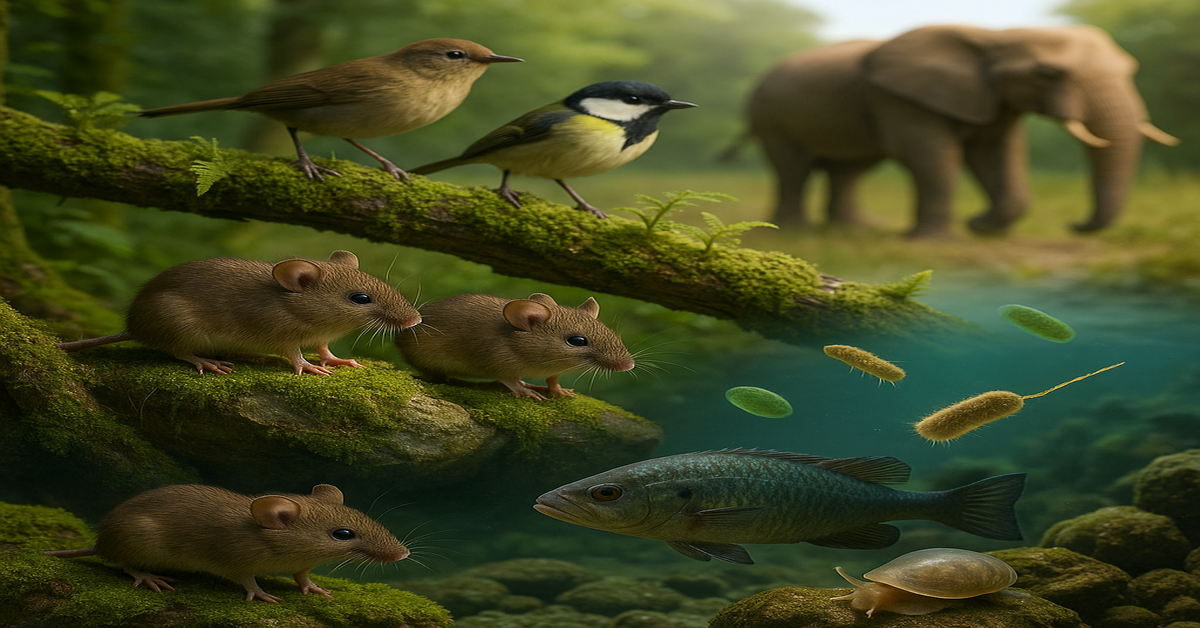
The term speciering refers to the biological process of species formation, also commonly known as speciation. It describes how populations of organisms diverge from a common ancestor and gradually evolve into distinct species. Speciering is one of the most fundamental topics in evolutionary biology because it explains the origin of the enormous diversity of life forms we see today. From the smallest microorganisms to the most complex mammals, every living species that exists or has ever existed arose through this process. Understanding speciering requires a careful exploration of genetics, ecology, behavior, evolutionary pressures, and geological changes that drive populations apart.
The study of speciering not only satisfies human curiosity about life’s history but also has direct implications for modern science, conservation, agriculture, and medicine. When scientists understand how species form, they can better predict how ecosystems will change, how diseases might evolve, and how to protect endangered populations. In this article, we will take an in-depth journey into the mechanisms, types, and consequences of speciering, providing clear explanations with examples and structured insights.
Defining Species in the Context of Speciering
To understand speciering, one must first grasp the concept of what defines a species. While it might seem straightforward—simply a group of similar organisms—the definition of species has been debated by biologists for centuries. The most widely accepted explanation is the Biological Species Concept, which defines a species as a group of organisms that can interbreed and produce fertile offspring, while being reproductively isolated from other such groups.
However, this concept is not perfect. For example, organisms that reproduce asexually, like bacteria, do not fit neatly into this definition. Similarly, there are cases of closely related species that can still produce hybrids, such as lions and tigers producing ligers. For these reasons, scientists also use other definitions, such as:
- Morphological Species Concept – Based on physical characteristics.
- Ecological Species Concept – Based on an organism’s ecological niche.
- Phylogenetic Species Concept – Based on evolutionary lineage and genetic distinctiveness.
Regardless of which definition is applied, speciering fundamentally explains how populations diverge genetically and ecologically until they are considered independent species.
Mechanisms Driving Speciering
Speciering does not happen suddenly; it is a gradual process influenced by a combination of evolutionary mechanisms. These include:
- Genetic Mutation
- Mutations introduce new variations into a population. While most mutations are neutral or harmful, some confer advantages that help individuals survive better in their environment.
- Natural Selection
- Natural selection drives populations toward adaptations that suit their environment. Over time, populations facing different ecological conditions may evolve unique traits.
- Genetic Drift
- Random changes in allele frequencies can cause divergence, especially in small populations where chance plays a bigger role.
- Gene Flow Reduction
- When populations become separated, the exchange of genes between them reduces, allowing differences to accumulate.
- Reproductive Isolation
- Eventually, barriers to mating or producing fertile offspring solidify, completing the speciering process.
Types of Speciering
Speciering can occur through several distinct pathways depending on the geographic and ecological context. These pathways are typically categorized into four main types:
1. Allopatric Speciering
This occurs when populations are geographically separated by barriers such as mountains, rivers, or distance. Over time, genetic differences accumulate until interbreeding is no longer possible. An example is the diversification of Darwin’s finches on the Galápagos Islands.
2. Sympatric Speciering
Here, new species form within the same geographic region, often due to ecological or behavioral differences. For instance, certain insects may specialize on different host plants, eventually diverging into separate species.
3. Parapatric Speciering
In this case, populations are adjacent but not entirely separated. Limited contact along a shared border can result in divergence, especially if environmental conditions differ across the boundary.
4. Peripatric Speciering
This is similar to allopatric specie-ring, but it involves a small group breaking away from a larger population. Because the smaller group is more susceptible to genetic drift, differences accumulate rapidly.
Table: Types of Speciering at a Glance
| Type of Speciering | Geographic Context | Key Mechanism | Example |
|---|---|---|---|
| Allopatric | Populations physically separated | Geographic isolation + natural selection | Darwin’s finches |
| Sympatric | Same region, different niches | Ecological specialization, polyploidy | Insects on host plants |
| Parapatric | Neighboring ranges, partial overlap | Environmental gradient, reduced gene flow | Grasses along soil types |
| Peripatric | Small group isolates from large population | Genetic drift, founder effect | Island bird colonization |
Genetic Basis of Speciering
The role of genetics in specie-ring cannot be overstated. Speciation begins with changes at the genetic level, which then manifest in physical or behavioral traits. For example:
- Chromosomal Changes: Sometimes, whole chromosome duplications (polyploidy) lead to instant speciation, particularly in plants.
- Gene Mutations: Even a single mutation affecting reproductive compatibility can trigger divergence.
- Epigenetic Factors: Chemical modifications to DNA can influence gene expression and contribute to adaptation without changing the genetic code itself.
Molecular studies using DNA sequencing have shown that even small genetic differences can accumulate into significant barriers over evolutionary time.
Ecological Factors Influencing Speciering
Environment plays a major role in shaping new species. Different habitats create selective pressures that favor specific traits. For example:
- In arid regions, plants may evolve water-conserving features, while those in wet climates may not.
- Predation pressures can cause prey species to evolve camouflage or defense mechanisms.
- Competition for food or mates can lead to niche specialization, driving populations apart.
Such ecological dynamics often interact with genetic factors, accelerating the process of specie-ring.
Speciering in Fossil Records
Fossil evidence provides critical insights into specie-ring. While fossils rarely show gradual transitions in fine detail, they reveal long-term patterns of divergence. Two major models have been proposed:
- Gradualism – Suggests species evolve slowly and steadily over time.
- Punctuated Equilibrium – Proposes that species remain relatively stable for long periods, interrupted by rapid bursts of speciation.
Both models are supported by fossil records in different contexts, indicating that specie-ring can follow multiple tempos.
Human Influence on Speciering
Humans have become a major driver of specie-ring in modern times. Through habitat destruction, climate change, and introduction of invasive species, we create new conditions that accelerate divergence. On the other hand, humans also cause species loss, preventing natural speciation from balancing extinctions. Examples include:
- Urban environments creating new ecological niches for birds and insects.
- Agricultural practices leading to hybrid crop species.
- Pollution driving adaptations in fish and amphibians.
Importance of Studying Speciering
Understanding specie-ring is crucial for several reasons:
- Conservation Biology: Protecting biodiversity requires knowing how species originate and persist.
- Agriculture: Specie-ring knowledge helps breed resilient crops.
- Medicine: Studying pathogen speciation explains how new diseases emerge.
- Climate Adaptation: Predicting how species will respond to changing climates.
Future of Speciering Research
Advances in technology continue to deepen our understanding of specie-ring. Tools like genome sequencing, CRISPR, and ecological modeling allow scientists to track changes at both genetic and population levels in real time. The future will likely reveal even more intricate connections between genetics, environment, and evolutionary history.
FAQs
1. What is speciering in simple terms?
Speciering is the biological process through which one population evolves into distinct species due to genetic and environmental changes.
2. How long does speciering take?
It can take thousands to millions of years, though in some cases like plants with polyploidy, it may happen almost instantly.
3. Can humans cause speciering?
Yes, human activities such as habitat alteration, pollution, and selective breeding can accelerate or direct speciation events.
4. Are hybrids considered new species?
Not always. Hybrids are crossbreeds between species, but unless they form stable, fertile populations, they are not recognized as separate species.
5. Why is speciering important for biodiversity?
It is the primary process that generates biodiversity, ensuring ecosystems remain resilient and adaptable over time.







